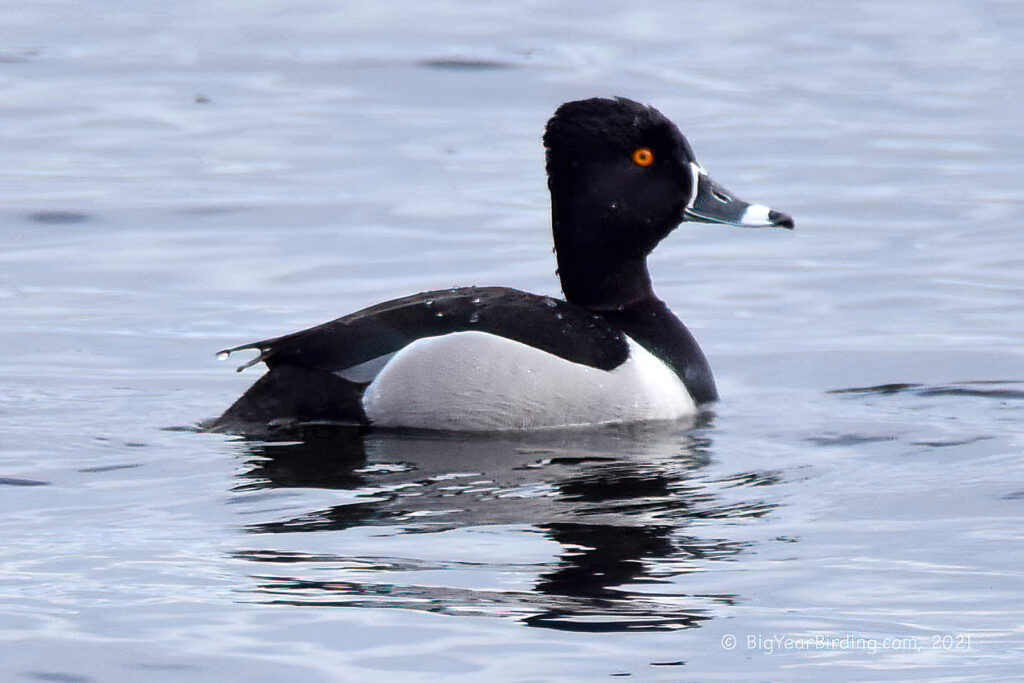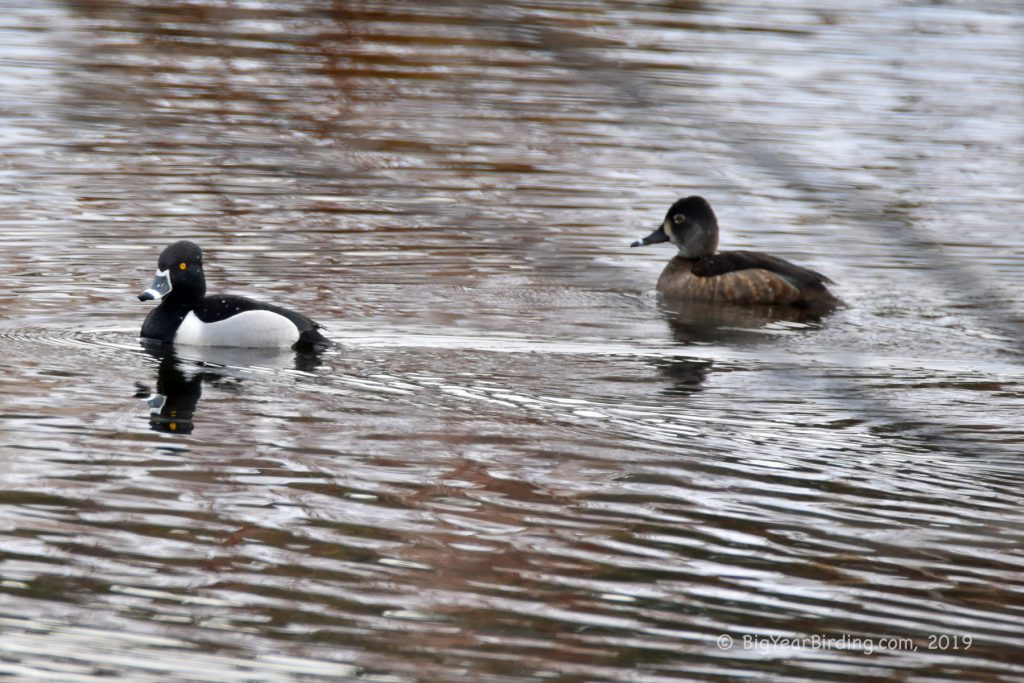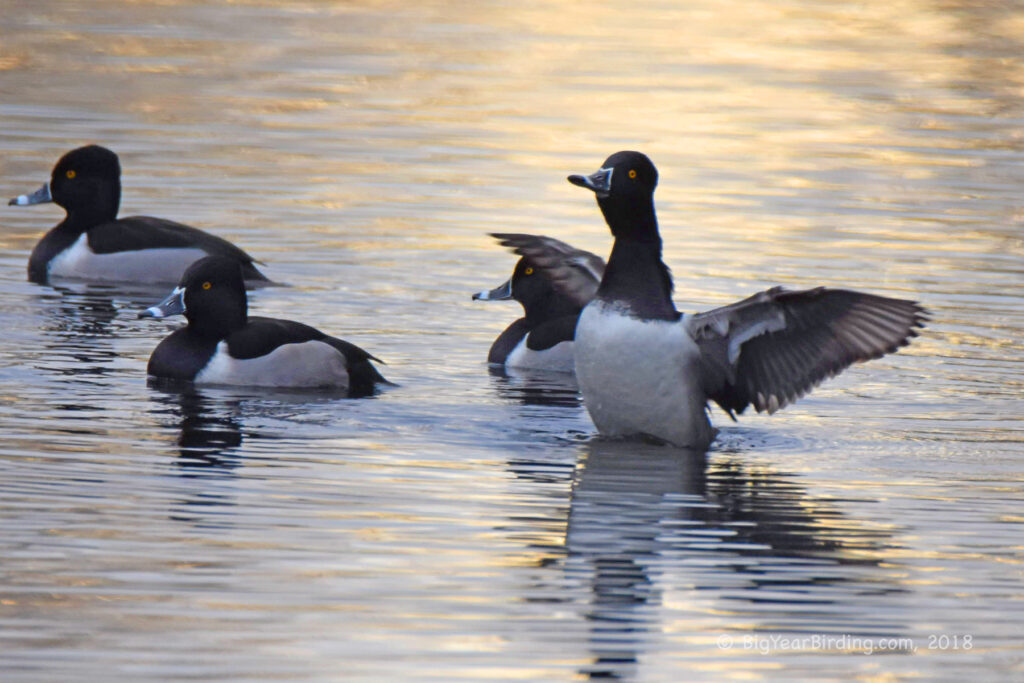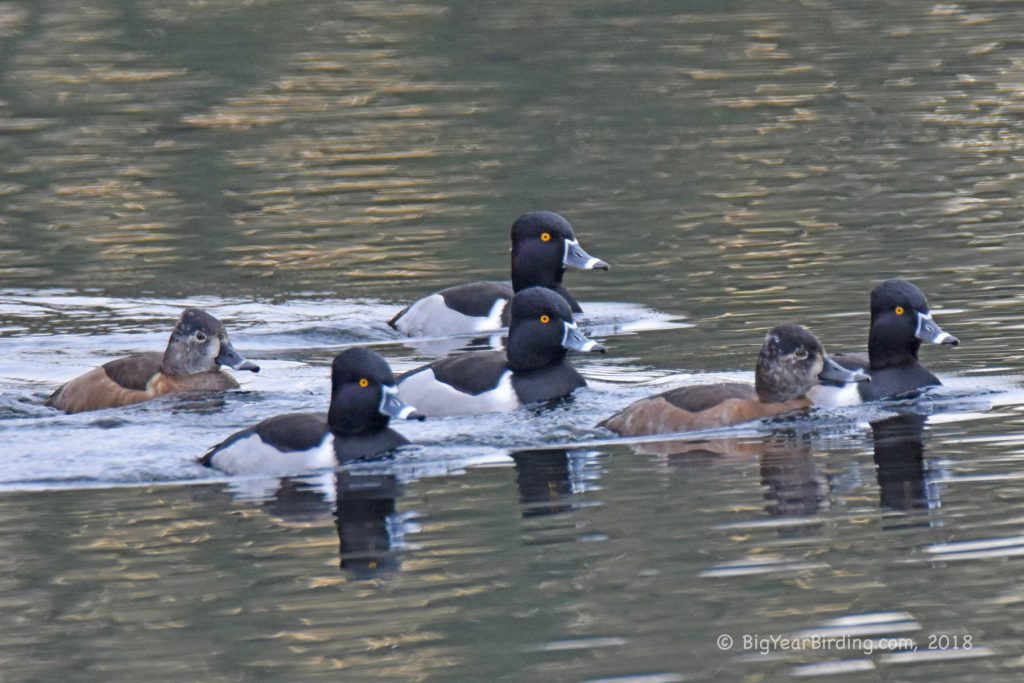
The Ring-necked Duck (Aythya collaris) is a small to medium-sized diving duck that can be found in North America during the breeding season. It measures about 15 to 18 inches in length and has a wingspan of approximately 26 to 29 inches. The male Ring-necked Duck has a distinctive black head with a purple sheen, a white ring around its neck, and a dark brown body. The female, on the other hand, has a brownish-gray head and body with a white eye-ring and a white patch on the bill.

The Ring-necked Duck can be found in freshwater habitats such as lakes, ponds, and marshes, especially those with abundant aquatic vegetation. It feeds mainly on aquatic plants and invertebrates. During migration, Ring-necked Ducks can be found in large flocks, often mixing with other species of diving ducks. They breed in the boreal forests of Canada and Alaska and migrate south for the winter, where they can be found from the Pacific Northwest to the eastern United States, as far south as Mexico and the Gulf of Mexico.
The Ring-necked Duck is known for its distinctive call, a series of grunts that sound like “yank-yank.” It is a diving duck that can stay underwater for up to 20 seconds, and can dive to depths of up to 30 feet. Its wings make a distinctive whistling sound during flight, which helps to identify the species.
In terms of size and weight, the male Ring-necked Duck is slightly larger than the female, weighing in at around 1.3 to 1.5 pounds, while the female weighs between 1.1 and 1.3 pounds. The wingspan of both sexes is similar, measuring between 26 to 29 inches. These ducks typically migrate south from late September through November, and return to their breeding grounds in late April through May.

Finally, the Ring-necked Duck can be distinguished from other diving ducks by its distinctive white ring around its neck. The male’s black head with a purple sheen and the female’s brownish-gray head and body with a white eye-ring and a white patch on the bill are also good distinguishing field marks. If you’re lucky enough to spot a Ring-necked Duck during migration or breeding season, take the time to observe its distinctive behaviors and calls.

